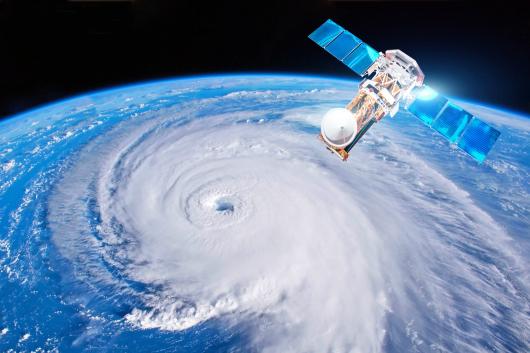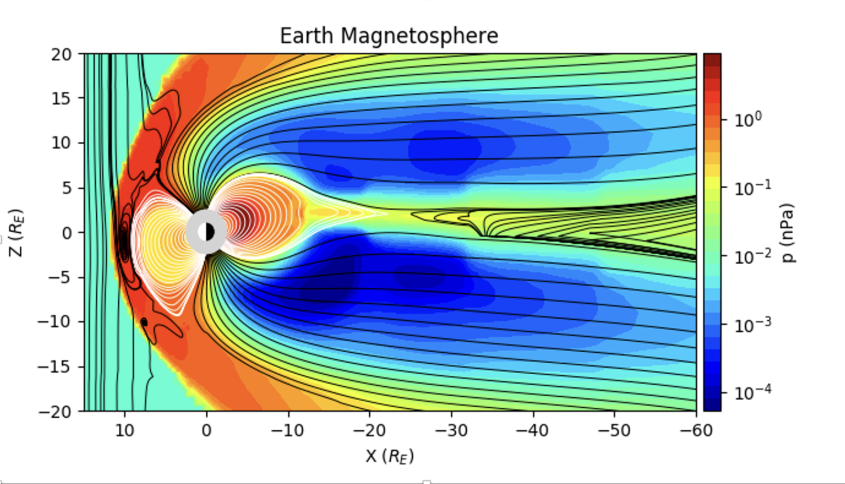The space weather effects threaten key aspects of our lives on Earth such as the internet, navigation (e.g., GPS, air travel, railways), space exploration, electric power transmission, and resource exploitation. The ability to forecast space weather dynamics is crucial.

Exploring the Sun's Influence on Near-Earth Space
The near-Earth space dynamics are continuously driven and/or affected by the Sun's activity. Examples of such activity include solar flares and coronal mass ejections from the Sun which can lead to geomagnetic storms and substorms in the near-Earth space environment, leading to beautiful auroras but also ultimately leading to harmful effects known as Space Weather.
BIGG is an ESA project (3D MHD Modelling of the Earth’s Magnetosphere, ESA SSA P3-SSWE-XLV) under the ESA's Space Situation Awareness programme for space weather, this project focuses on developing a real-time space weather forecasting capability based global 3D Magnetohydrodynamics (MHD) modeling of the Earth's magnetosphere. The project's outputs will be part of the University of Bergen's contribution to the ESA’s Space Weather Service Network. The BIGG consortium is led by UiB and includes Imperial College London (ICL).
"The Sigma2 state-of-the-art e-infrastructure is very useful since it enables scientific research and application of it operationally in a useful way to society. This would otherwise be impossible."
Norah Kaggwa Kwagala, Researcher UiB.
Integrating MHD Models for Enhanced Space Weather Forecasting
Physics-based modeling of space weather effects for predictive purposes requires a large-scale magnetospheric model, coupled with a suitable ionospheric model. Because of the vast spatial domain, and the complexity of a system, which is driven by the interaction of the solar wind with the magnetosphere, these models are based on MHD. The BIGG multi-model forecasting system in the current work includes two global physics-based MHD models, whose forecasts will complement each other.
The MHD code that is being run on the Sigma2 resources during this project is the geospace part of the Space Weather Modeling Framework (SWMF), a highly parallel code developed by the Center of Space Environment Modeling of the University of Michigan. The second one is ICL’s Gorgon MHD code which is similarly highly parallel. The two global models are driven by measurements of solar-wind conditions upstream of the earth’s magnetosphere.
Architecture and Collaboration Behind the BIGG System for Accessible Space Weather Forecasts
The BIGG system consists of three main layers; the resource layer which interfaces to the data management layer which interfaces the presentation layer. The presentation layer will then couple to ESA’s Space weather portal where forecasts will be accessible and available to everyone. The resource layer constitutes the global models on sigma2 and at ICL. The common BIGG database forms the data management layer and a webpage and API form the presentation layer. The development work of the BIGG system is being done with strong collaboration and support from the sigma2 AUS (Advanced User Support) and NRIS technical support.
